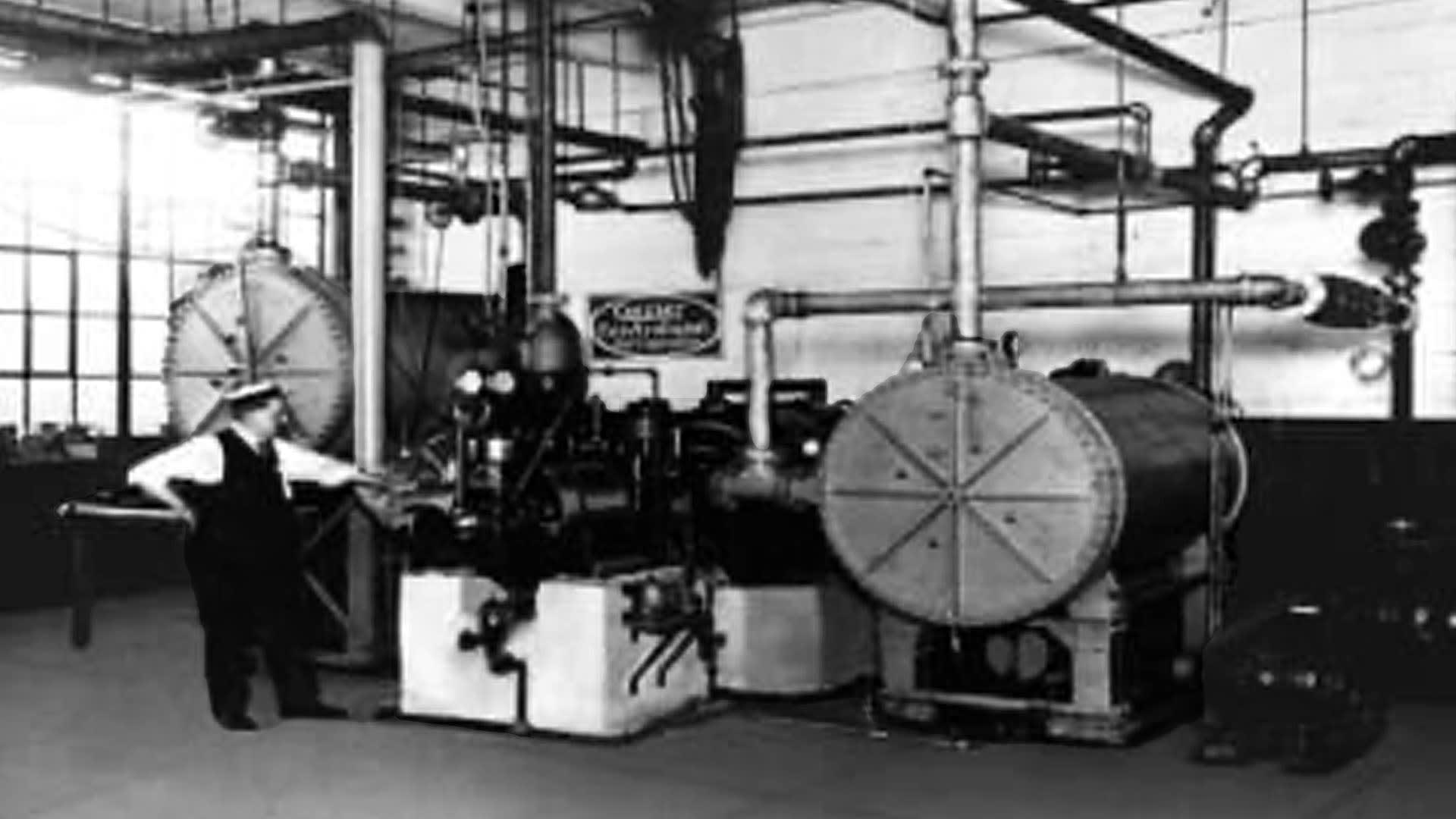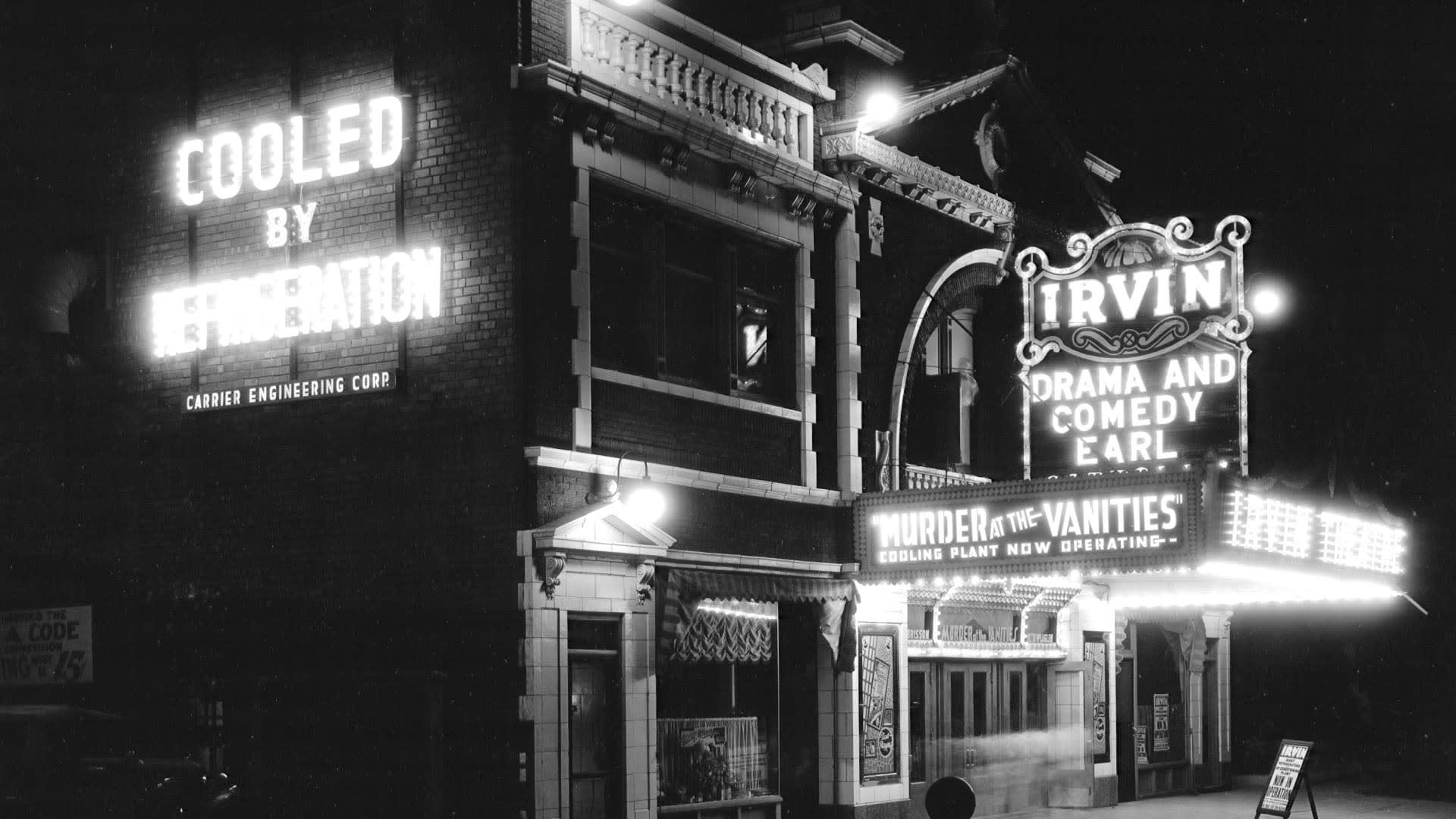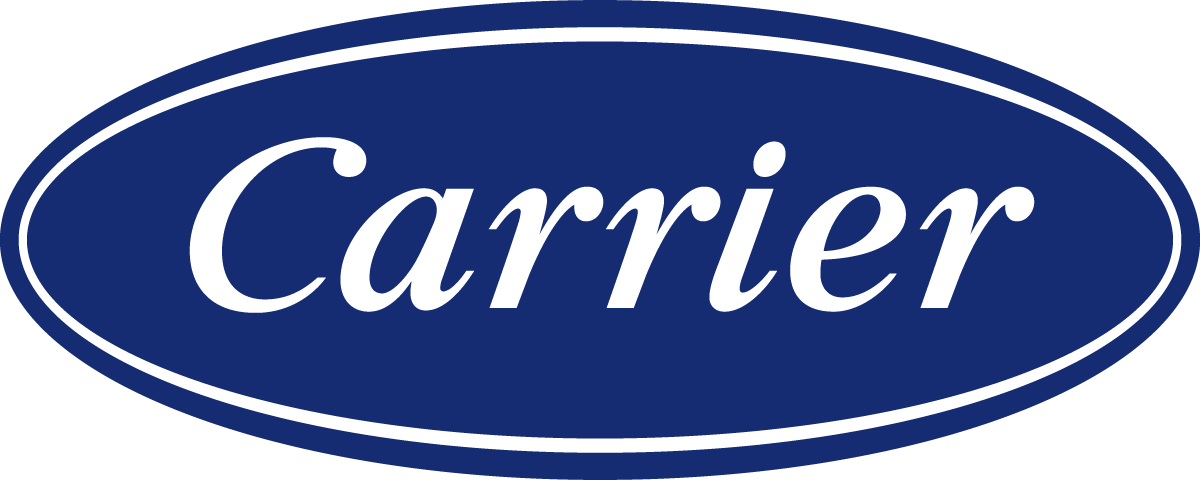In May 1922, Willis Carrier unveiled his single most influential innovation, the centrifugal refrigeration machine (or “chiller”). Over the next decade, the centrifugal chiller would extend the reach of modern air conditioning from textile mills, candy factories and pharmaceutical labs to the revolutionary work of ensuring human comfort in theaters, stores, offices and homes.
Supported by nearly 20 new patents, centrifugal chillers provided affordable, safe and efficient cooling. The first sale was made to longtime customer W.F. Schrafft and Sons Candy in Boston, though the honor of the first installation went to Philadelphia candy manufacturer Stephen F. Whitman & Son.
Other elements of modern air conditioning evolved to keep pace. Carrier partnered with three large fan manufacturers in May 1923 to found the Aerofin Corporation. Aerofin offered a lightweight, brass and copper alternative to bulky cast-iron heat exchangers.
Powered by these innovations, Carrier launched its own version of “the Roaring Twenties” in 1924 with the first in a series of historic installations. The J.L. Hudson Company, Detroit’s largest department store, installed three, 195-ton centrifugal chillers. Officially classified as comfort air conditioning, Willis Carrier noted, the installation was also designed “to meet an emergency as temperatures soared on basement bargain days—people fainted.” Other sophisticated retailers in Seattle, Boston, Cincinnati, Dallas and New York City soon followed.






